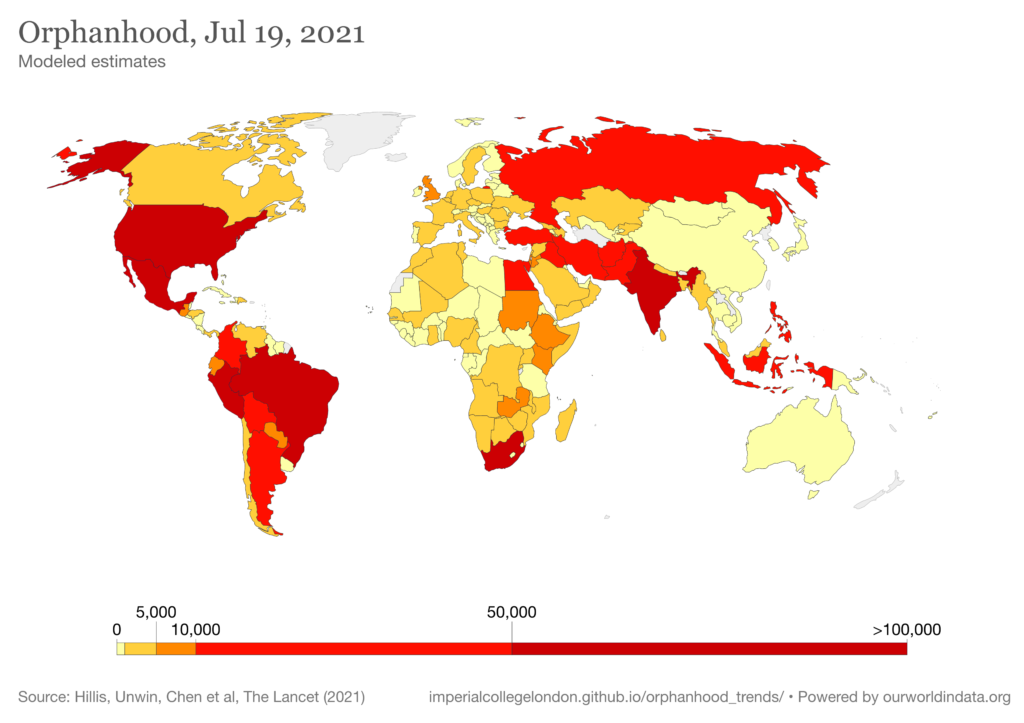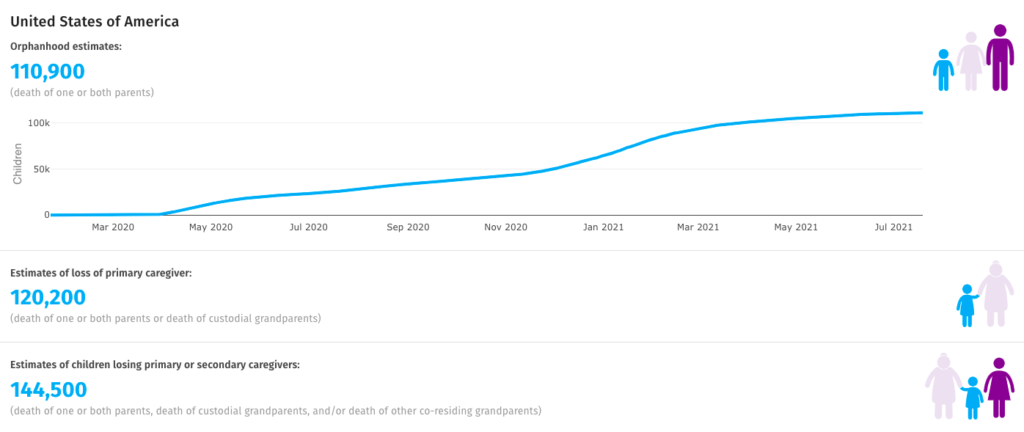‘Urgent And Overlooked’ Side-Effect Of Pandemic — Children Left Without A Caregiver Due To Covid-19
By a Biometrica staffer
Last week, a coalition of researchers from organizations including the Centers for Disease Control and Prevention (CDC), the UN’s World Health Organization, and the World Bank published a report in the medical journal Lancet, in which it was estimated that during the first 14 months of the Covid-19 pandemic, at least 1.5 million children globally were left without caregivers as a result of the virus, with over a million of them losing their primary caregivers.
This “hidden pandemic” has widened the net casted by Covid-19, adding another population to the virus’ global toll of 4 million-plus direct deaths. The study looked at mortality and fertility data across 21 countries that together accounted for 77% of Covid-19 deaths over the time frame. Children were most severely affected in South Africa, Peru, United States, India, Brazil, and Mexico. The deaths measured included those associated directly with the virus, and those indirectly linked, including through lockdowns, movement restrictions, healthcare infrastructures being overburdened, and other chronic diseases/comorbidities.

Between March 1, 2020 and April 30, 2021, the report estimates that 1.13 million children lost a parent or custodial grandparent, with 1.04 million losing either a mother, father, or both (most lost only one parent, not both). Overall, children were anywhere between two to five times more likely to have lost a father than a mother, with the overall death rates associated with Covid-19 seeming to disproportionately have affected men.
The World Bank put it in particularly stark terms: “For every 2 people who die of COVID, 1 child is left orphaned.” Additionally, at the current rate noted by researchers, every 12 seconds roughly one child is orphaned due to Covid-19.
In the U.S. in particular, around 119,000 children lost a primary caregiver, with over 140,000 experiencing the death of a primary or secondary caregiver. This is in addition to the 600,000 Americans who died as a direct result of contracting the virus.

The report strongly emphasized that the noted results were indicative of a much more devastating trend, estimating that over 4 million more children (on the conservative end) could lose a parent or caregiver to Covid-19 in the coming years. The pandemic seems to be showing no signs of abating, with more mutant strains spreading throughout the world, and with vaccines not having reached many people globally.
As the New York Times reported, “A child’s life often falls apart when he or she loses a parent or grandparent caregiver.” For context, around 40% of American grandparents who live with their grandchildren are their primary caregivers. According to the Pew Research Center, in 2016, 64 million Americans (roughly 20% of the overall population) were living with multiple generations of their families, with roughly 3.2 million living in households with grandparents and grandchildren.
The effect could be even more severe in the long-term as this type of trauma could increase a child’s susceptibility to substance abuse, homelessness, mental illnesses, estrangement from siblings or other family members, dropping out of school, and other “behavioral and chronic health conditions” down the line. By affecting stability, it can also impact the poverty and nutrition levels of children. They may be more likely to engage in and be victims of violence, and may fall prey to child marriage.
According to the World Bank, the fallout of such loss “will reverberate across generations.” The researchers behind the report say that as various stakeholders begin to implement new response plans, they should also prioritize the “psychosocial and economic” well-being of children who have lost parents, grandparents, and/or caregivers to Covid-19.
In addition, last month, the UN revealed that the number of children forced into labor increased in 2019 for the first time in 20 years, a situation only likely to have worsened during the pandemic. As of the start of 2020, around one in ten children (160 million) were involved in child labor.
The Proceedings of the National Academy of Sciences estimates that a total of 5.48 million people in America have mourned the loss of a loved one to Covid-19. Meanwhile, the CDC said last week that the average life expectancy of Americans fell by 1.5 years in 2020, and that just under 75% of this effect was attributable to the pandemic. Last year, over 3.3 million Americans died, with Covid-19 being responsible for around 11% of that figure.